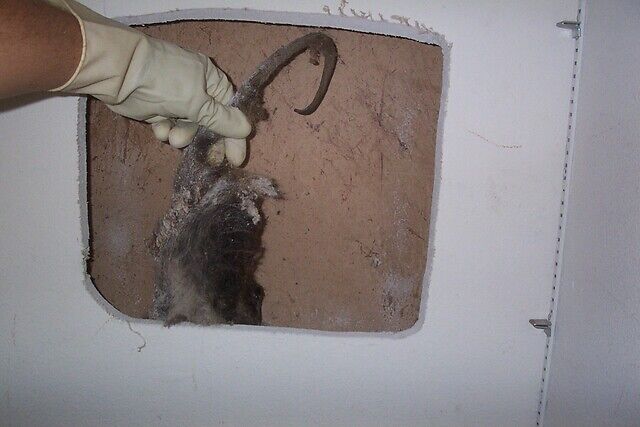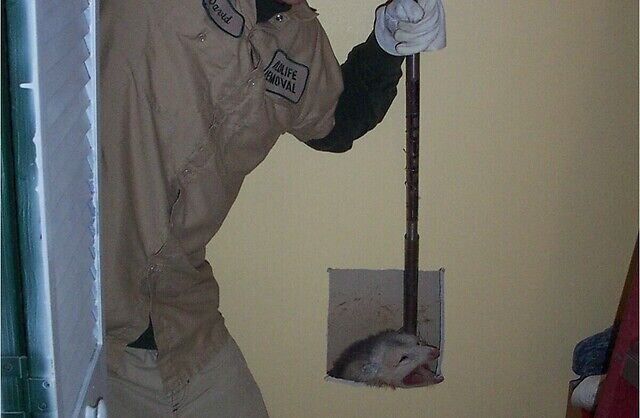Locating and Removing Dead Opossums
One of the reasons people are encouraged to remove opossums living in their home is that it’s a cleaner job removing a live animal than a dead one. If there’s a dead opossum in your house, you’ll know about it by the pungent odor of decay. You’ll want to get rid of it fast – not only does it stink, but that smell will act as a beacon for other scavengers.
Finding the dead opossum isn’t always easy, as they hide away in the dark crevices that are safe for them, but difficult for you to access. When getting rid of a dead opossum, you have two options: call in a professional, or go looking for it yourself. If you want to take care of it yourself, grab a flashlight, follow your nose and be prepared to crawl through your home’s darkest corners.
But how exactly do you locate a dead opossum? And what do you do when you find it? Read on to learn more about how to find, dispose of, and clean up after a dead opossum.
Find the Opossum

As unpleasant as it is, the stench will be the best indicator as to the dead opossum’s location. Steel your stomach, and follow the scent to its source. If you get to the area where the smell is most potent, but you can’t see the dead possum, check all nearby nooks and crannies. If the odor is inside, you may find that the carcass is in the attic, ventilation ducts, or even in wall cavities.
What do I do if I can’t get to it?
Opossums rarely die somewhere that’s convenient for you to find and clean. If the body is tucked away somewhere you can’t access, or the thought of retrieving the body makes you squeamish, don’t despair: there are professional services that you can hire to remove the opossum carcass for you.
Dispose of the Opossum

Finding the opossum is just the first part of this unpleasant task. Now you need to dispose of it.
- Use a plastic bag, and wear protective gear: long sleeves, gloves, and a facemask. The protective equipment isn’t just because dealing with dead animals is a dirty business: opossums carry lice and ticks, both of which will be looking for a new host.
- Use the bag to scoop the opossum up. Alternatively, you could find a pair of sticks and use them as a kind of makeshift tongs to lift the body into an open bag.
- Once the dead opossum is transferred into the bag, tie it up and double bag it. You want to seal the smell and parasites inside.
- You can get rid of the carcass by putting it in the garbage or contacting animal control for disposal.
Whatever you do, don’t bury the opossum. The scent will attract other scavengers. Animals have more sensitive noses, so even if you can’t smell a buried opossum, they can. The last thing you need is for them to dig it back up.
Clean the Area
Put on long sleeves, gloves, and a mask: it’s time to clean up after the decomposing body. Wash the area down thoroughly, using a quality disinfectant.
The next step is to get rid of that pungent smell. If possible, maximize the airflow through the area and use vinegar or baking soda to the area to absorb the odor. You can either apply one of these products directly to the surface that the dead opossum was on, or pour it into small bowls placed around the area, making sure to remove them once the smell is gone.